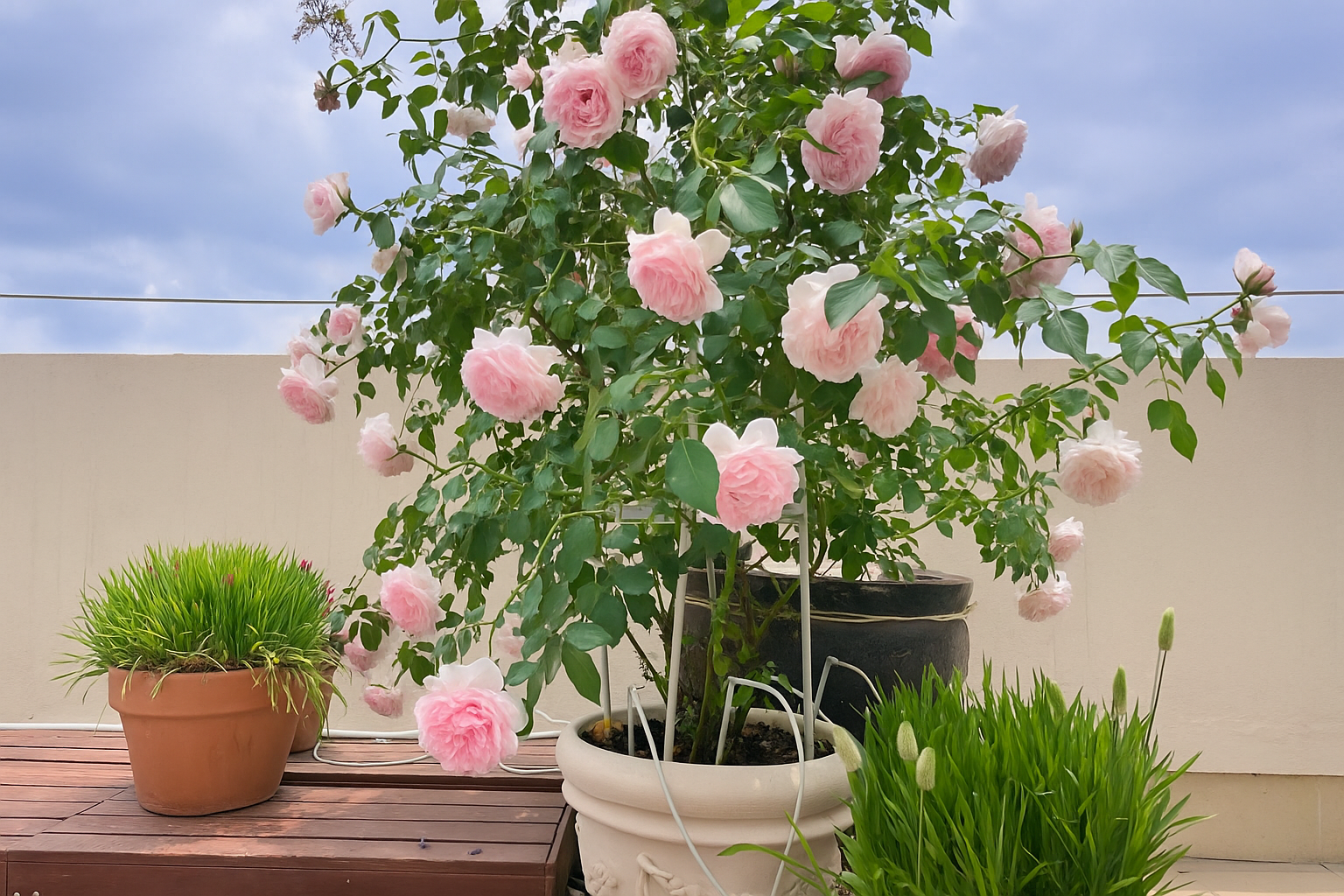Article: How to Protect Roses During Winter in the U.S.

How to Protect Roses During Winter in the U.S.
How to Protect Roses During Winter in the U.S.
When winter arrives, roses need the right care to stay healthy and bloom beautifully again in spring. Whether your roses are planted in the ground or growing in pots, this simple guide will help you understand how to keep them safe through the cold season.

1. When the Temperature Drops
When the temperature falls below 60°F (15°C), stop fertilizing. Your roses should begin to slow their growth and prepare for dormancy.
Keep watering as needed, but avoid heavy pruning before winter. Pruning too early can cause damage if the plant has not fully entered its resting stage.
2. Caring for Potted Roses
When night temperatures stay between 23°F and 40°F (-5°C to 5°C), it is time to protect your potted roses. Move them to a sheltered area such as a garage, greenhouse, porch, or basement that stays above freezing.
Before moving, clean the pots and remove any fallen leaves. Check for pests and spray with insecticidal soap if needed.
Keep watering lightly every two to three weeks — just enough to keep the soil slightly moist. Do not overwater, as roots use very little moisture while dormant.
If your space is dry, you can mist the leaves or place a tray of water nearby to maintain humidity.
In mild climates like California or Texas, potted roses can often stay outdoors with extra protection such as mulch or frost cloth.
3. Caring for In-Ground Roses
Roses planted in the ground are naturally more resistant to cold, but they still need some protection.
When the temperature drops near 20°F (-6°C) or lower, cover the base of each rose with a thick layer of mulch about 4–6 inches deep. You can use compost, bark chips, or shredded leaves. This helps insulate the roots and prevent freezing.
If your area experiences strong winds or heavy frost, use burlap or frost blankets to wrap the plant loosely, leaving space for air to circulate.
Avoid using plastic wraps, as they trap moisture and can lead to mold or rot.
4. Winter Maintenance
Do not cut back roses too early. Wait until late winter or early spring when you see new buds forming before pruning.
If you need to refresh soil or repot, late winter (around February or March) is a good time, while the plant is still dormant but the ground is not frozen.
For in-ground roses, check that the soil stays slightly moist during dry winters. Water on warmer days if needed.
5. Bringing Roses Back in Spring
When the weather becomes mild and days reach above 50°F (10°C), start uncovering or moving your roses outdoors.
For potted roses, place them first in a shaded area for a few days to adjust to sunlight and temperature. Then move them gradually to full sun.
For in-ground roses, gently remove extra mulch around the base once the frost risk has passed.
6. Common Mistakes to Avoid
-
Do not prune before dormancy.
-
Avoid overwatering during the winter.
-
Never wrap roses too tightly or with plastic.
-
Don’t keep potted roses in a warm indoor room — they need a cool resting period.
-
Always check for pests before storing roses indoors.
Final Tip
Every U.S. region is different.
-
In USDA Zones 8–11 (such as California and Florida), roses can often stay outdoors year-round with light protection.
-
In Zones 5–7, it is best to protect both potted and in-ground roses from freezing with mulch and shelter.
With the right winter care, your roses will wake up strong and full of life when spring returns.





Leave a comment
This site is protected by hCaptcha and the hCaptcha Privacy Policy and Terms of Service apply.